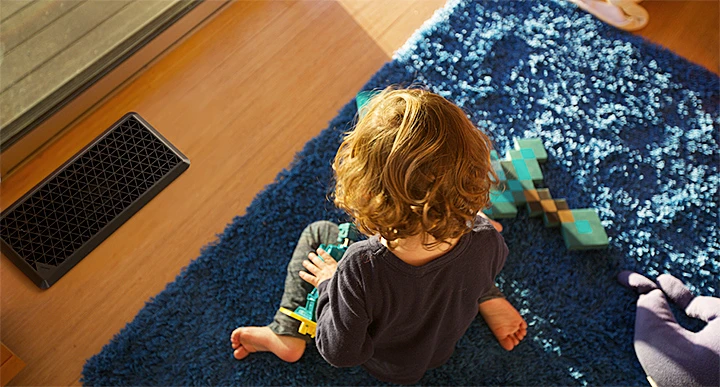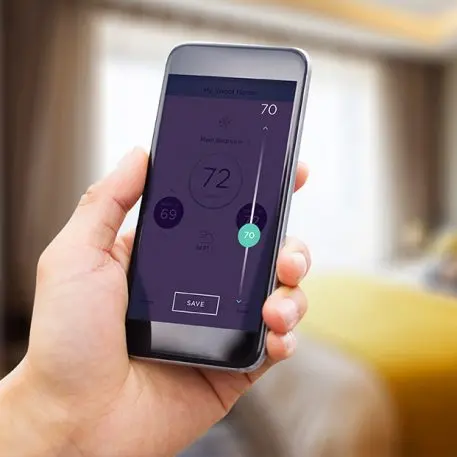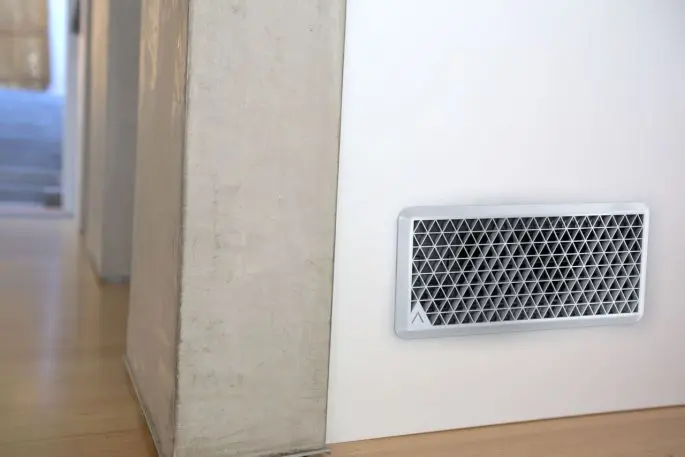In 1970s Iran, entrepreneur Hamid Farzaneh started a company that installed heating and cooling systems into the homes of wealthy Iranians. But he noticed a problem: The HVAC systems only gave people an on-off switch to control the temperature of their entire home. That led to some rooms being too warm and others too cool because some rooms naturally heat up more than others due to window placement and how much sun they receive as the outside temperature shifts. “Imagine you just had your main water valve as the only control to open water through the house, and individual faucets did not exist,” Farzaneh says. “That’s essentially the system we have.”
At the time, there wasn’t much he could do to fix this problem of air distribution: There was no internet and no accessible sensors or wireless technology, and conversations around energy efficiency in the home hadn’t gone mainstream.

Then the Iranian Revolution happened, and Farzaneh left the country for the United States, where he began working in Silicon Valley in the 1980s. After decades of working at technology startups, Farzaneh cofounded Alea Labs in 2015 to solve that basic HVAC problem he’d encountered back in Iran, one that is pervasive in the United States as well. Today, Alea is launching its first product: a smart ventilation system equipped with 11 different sensors that gives homeowners control over the temperature in every room of their house at any given time. Because the system is connected to the cloud, it is constantly analyzing how the temperature in each room shifts throughout the day, and automatically adjusts the air flow to keep each space at the temperature that users prefer. Each smart vent, which looks similar to an HVAC grill you’d find in any home, has the sensors built into it.
It’s a smart use of technology to fix a problem most of us probably didn’t know existed–one that could have a real impact on our wallets. Unlike typical HVAC systems, which turn on in every room of your house even if you just want to cool down your bedroom, Alea Air’s smart vents close in rooms where you don’t want to direct the air flow, targeting only the rooms you do want to cool. This cools them faster and uses less energy. As a result, Farzaneh estimates that Alea Air will be able to lower users’ energy expenses by at least 20%.
Tackling such an unsexy problem like HVAC air flow isn’t Silicon Valley’s usual approach to the smart home. But overdesigned juicers and smart ovens aren’t solving the real problems of the home, which tend to be much more mundane. That was the smart home company Nest’s real insight when it launched in 2010. It has since become a household name and a commercial success.
[Image: Alea]
The sensor-filled smart vent versus the smart thermostat
At first glance, Alea Air seems similar to smart thermostats like Nest, but Farzaneh says that while smart thermostats focus on making it easier to program what temperature you want your house to be, they don’t control air flow. Nest will let you program when your A/C should come on and when to turn it off, but it’s still fundamentally an on-off switch. Alea Air is like installing a separate Nest in every single room of your house that only controls one vent of your HVAC system.
However, Alea Air can work with a product like Nest, where Nest is the programmable on-off switch, and Alea gives users more granular control over where air flows in their house. By only heating or cooling specific rooms to the exact degree that’s necessary–you might want your bathroom warmer than your bedroom, for instance–you can theoretically improve energy efficiency overall. Plus, Alea Air’s sensors also test for air quality. In the future, Farzaneh plans to add additional sensors that detect dust and pollen. Alea Air also has a rechargeable battery that’s powered with thermoelectric energy-harvesting, which uses the difference in temperature between the duct’s hot or cold air and the room’s ambient air to generate electricity. For the system’s first generation, this can add 20% to 30% to the lifespan of its conventional batteries. Eventually, Farzaneh hopes to have all of Alea Air running on renewable energy so you never have to change the batteries at all.

An app to control the ideal temp for every room in the house
Each smart vent connects to the cloud and is controlled through an app. Farzaneh recognized that no one wants to look at charts of how hot or cold their house is–they just want to feel comfortable at home. So even though there are 11 sensors built into each vent that are collecting data, very little of that information is actually displayed on the app, which is focused instead on letting users set their temperature preferences for each room. (Though Alea also has a dashboard with all the data that’s designed for professionals installing and monitoring the Alea Air system.)

A vent that’s modular, easy to install, and beautiful
The company also had to produce assorted vent sizes to accommodate consumers’ different homes. Such variety could prove pricey to manufacture, so Farzaneh designed the vents’ chassis to be modular–the structure can shift in size, but the electronic components are always the same.
While users can hire professionals to install Alea when they’re renovating their home, for instance, the system was designed to be entirely DIY. Because all the sensors are built into each vent, homeowners can simply lift out their old vents and slot the Alea Air vents right into the floor. Vents that are on the wall or ceiling are typically held in place with a few screws, and only take a few minutes to replace using a screwdriver. Each vent wirelessly connects to a central Airhub via Wi-Fi, which controls when the vents open and close.
To create the perfect electronically controlled grill, Farzaneh and his team created different designs, then digitally simulated how the air would flow through them. The final version was designed to dispel air as far into the room as possible, allowing it to heat or cool the room more effectively. And his wife, who’s a painter, had final say on the grill’s external triangular design. “She is very strict on things that come into our home,” Farzaneh says. “She ever would have tolerated an ugly grill on one of our walls.”
Will customers understand the distinction between a smart vent and a smart thermostat? Does Alea stand a chance if more established smart home companies with better name recognition decide to put out a similar product? It’s too soon to tell. Still, Alea Air a clever way of using connected technology to make a space more comfortable and efficient. Forget smart ovens: The decidedly less glamorous HVAC just might be the future of the smart home.
Alea Air is available for pre-order. Three vents and the connected Airhub cost $379, with additional vents for $119 each. The system will begin shipping in January 2019.
Recognize your brand’s excellence by applying to this year’s Brands That Matter Awards before the early-rate deadline, May 3.